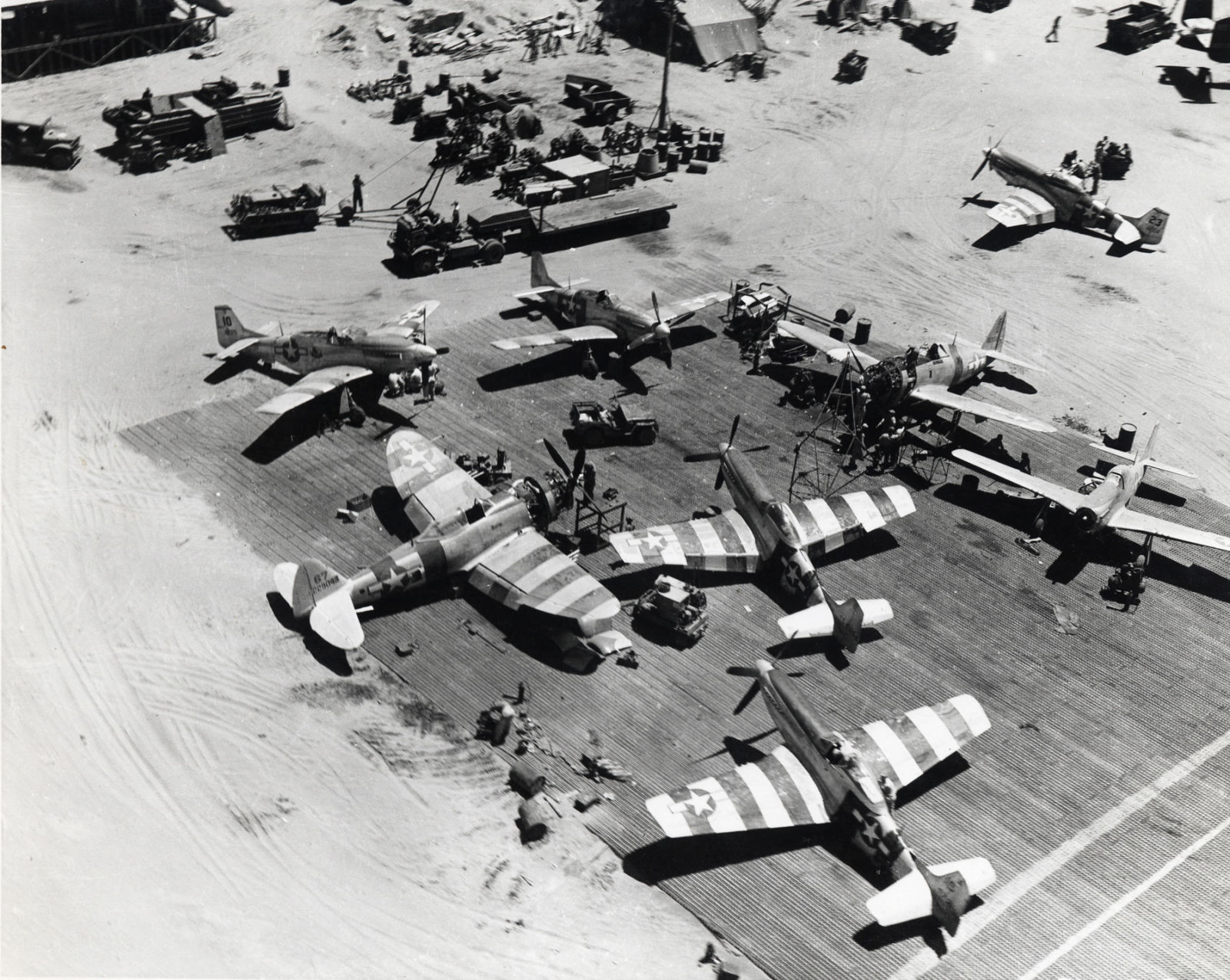
Lingayen Airfield, Luzon, Philippines, April 1945
Established prior to WWII by either the US or Philippine armies, Lingayen Field was initially used by pilots on familiarization flights in North Luzon. After the IJN attacked on 12/8/14, some USAAC pilots evacuating Clark and Iba Fields landed at Lingayen. The field was later captured by the Japanese in December of that year, and was utilized by aircraft from the Japanese Navy and Army until January of 1945, when the US Navy conducted landings in the Lingayen Gulf. The airfield was repaired and expanded, and by February was being used by fighter and reconnaissance aircraft, as well being a recovery strip for bombers unable to land at Clark. After the end of the war, the field was turned into a regional airport serving the province of Pangasinan.
The 35 Pursuit Group (Interceptor) was activated on 2/1/40 at Moffett Field, California, with the 21st and 34th Pursuit Squadrons equipped with Seversky P-35s, Curtis P-36 Hawks, Bell P-39 Aircobras and Curtis P-40 Warhawks. In November of 1941 the group was moved to the Philippines, and took part in the ‘41-’42 Battle of the Philippines. Both squadrons were destroyed in the battle, with some personnel serving as infantry and eventually fell victim to the Bataan Death March. The 35th was reconstituted in Australia, training with P-39s before receiving Lockheed P-38 Lightnings and later Republic P-47 Thunderbolts and North American P-51 Mustangs. The Group took part in blunting attacks over Papua, as well as missions to recapture New Guinea, protect Port Morseby, and later missions in Borneo, the Philippines, Formosa and China before moving on to Kyushu and Okinawa. The unit was involved in the Korean War, flying P-80 and F-51s. Inactivated in 1954, the unit assisted in training Royal Thai AF units from 1963 to 1965, then was inactivated again until 1993 when it was assigned to NAS Keflavik, flying F-15s and HH-60G rescue helicopters. The unit was moved to Misawa Air Base in Japan the next year, transitioning to F-16C/D in support of JASDF Northern Air Defense Force.
Of note are the wing stripes on the P-47s and P-51s gathered in this photo. Different than those applied to European Theater aircraft, the stripes are wider, and extend further down the wingspan of the planes. They also appear to be only black over natural metal; unsurprising given the eschewing of camouflage that took place in ‘44 and ‘45. Further note that the top two Mustangs have only two bands while the bottom two have three, perhaps indicating F-6K photo recon variants or planes being painted.